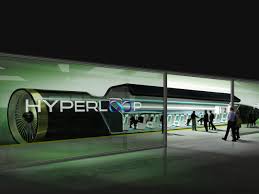
Breaking News
 Trump pardons Mets legend, 'Celebrity Apprentice' alum Darryl Strawberry over tax evasion co
Trump pardons Mets legend, 'Celebrity Apprentice' alum Darryl Strawberry over tax evasion co
 You WON'T BELIEVE How Much Money We're REALLY Sending To Israel!
You WON'T BELIEVE How Much Money We're REALLY Sending To Israel!
 China CANCELS U.S. Soybean Order?! Joel Salatin
China CANCELS U.S. Soybean Order?! Joel Salatin
 Ep 38 Jonathan Haidt: on The Anxious Generation: Childhood in Social Media Age & Fragile College ...
Ep 38 Jonathan Haidt: on The Anxious Generation: Childhood in Social Media Age & Fragile College ...
Top Tech News
 HUGE 32kWh LiFePO4 DIY Battery w/ 628Ah Cells! 90 Minute Build
HUGE 32kWh LiFePO4 DIY Battery w/ 628Ah Cells! 90 Minute Build
 What Has Bitcoin Become 17 Years After Satoshi Nakamoto Published The Whitepaper?
What Has Bitcoin Become 17 Years After Satoshi Nakamoto Published The Whitepaper?
 Japan just injected artificial blood into a human. No blood type needed. No refrigeration.
Japan just injected artificial blood into a human. No blood type needed. No refrigeration.
 The 6 Best LLM Tools To Run Models Locally
The 6 Best LLM Tools To Run Models Locally
 Testing My First Sodium-Ion Solar Battery
Testing My First Sodium-Ion Solar Battery
 A man once paralyzed from the waist down now stands on his own, not with machines or wires,...
A man once paralyzed from the waist down now stands on his own, not with machines or wires,...
 Review: Thumb-sized thermal camera turns your phone into a smart tool
Review: Thumb-sized thermal camera turns your phone into a smart tool
 Army To Bring Nuclear Microreactors To Its Bases By 2028
Army To Bring Nuclear Microreactors To Its Bases By 2028
 Nissan Says It's On Track For Solid-State Batteries That Double EV Range By 2028
Nissan Says It's On Track For Solid-State Batteries That Double EV Range By 2028
A Pod Races Through the Hyperloop for the First Time Ever

The future sounds a bit like a witch crying over a dead cat. That spooky wail is the sound hyperloop makes—at least, the version of the high-speed transportation system designed by Hyperloop One, which just took a big stride toward the day it flings you between cities in near-vacuum tubes.
The Los Angeles company leading the race to fulfill Elon Musk's dream of tubular transit tested its pod for the first time last weekend. That pod is 28 feet long and made of aluminum and carbon fiber. It looks a bit like a bus with a beak.
A fast bus with a beak. Once loaded into a 1,600-foot long concrete tube in the Nevada desert, the pod hit 192 mph in about 5 seconds, using an electric propulsion system producing more than 3,000 horsepower. As the pod accelerated through the tube 11 feet in diameter, the 16 wheels retracted as magnetic levitation took over. Mag-lev—used by high-speed trains in Japan and elsewhere—reduces drag, and the energy required to achieve near-supersonic speeds. It helps, too, that Hyperloop One's engineers also pumped nearly all the air out of the tube, reducing air pressure to what you'd experience at an altitude of 200,000 feet.
"This is the dawn of the age of commercialization for the hyperloop," says Shervin Pishevar, Hyperloop One's executive chairman and co-founder.
It's a big step to be sure, but just one of many in the long journey ahead. The weekend test provided a nice proof of concept, but the challenge is not making hyperloop work, but making it practical. For hyperloop to truly take off, it must operate cheaply enough to lure customers away from air travel or high-speed rail. And then there's the problem of loading people or, more likely, cargo without ruining that near-vacuum state, designing and building stations, getting an endless list of public agencies and players to agree to build the thing, and so on.

 Carbon based computers that run on iron
Carbon based computers that run on iron

